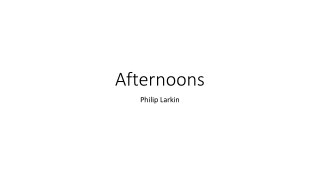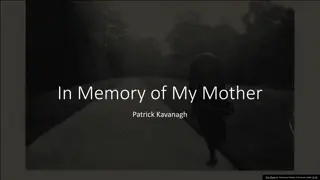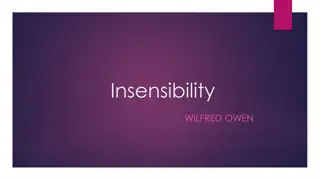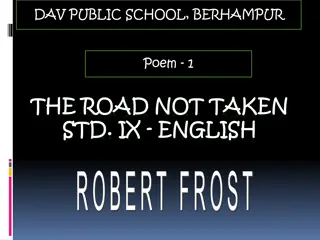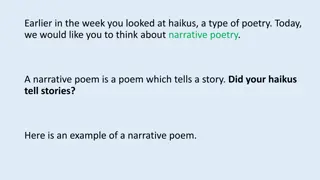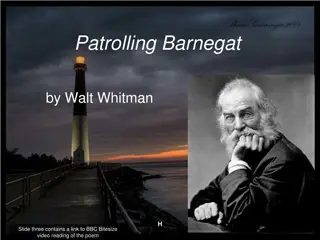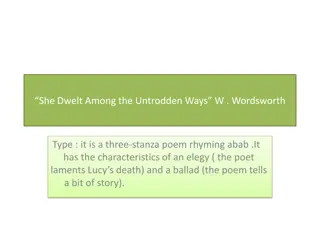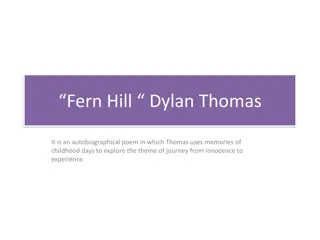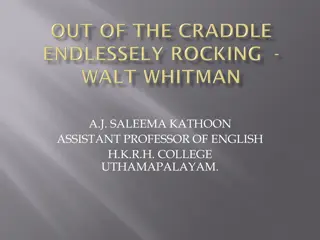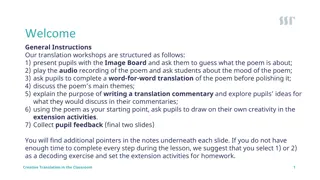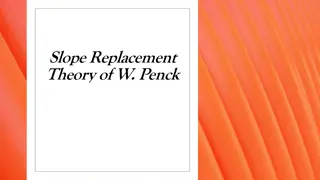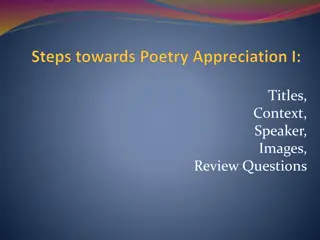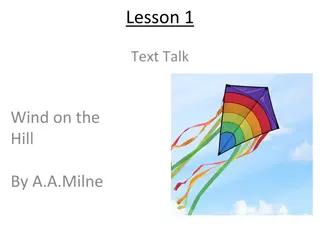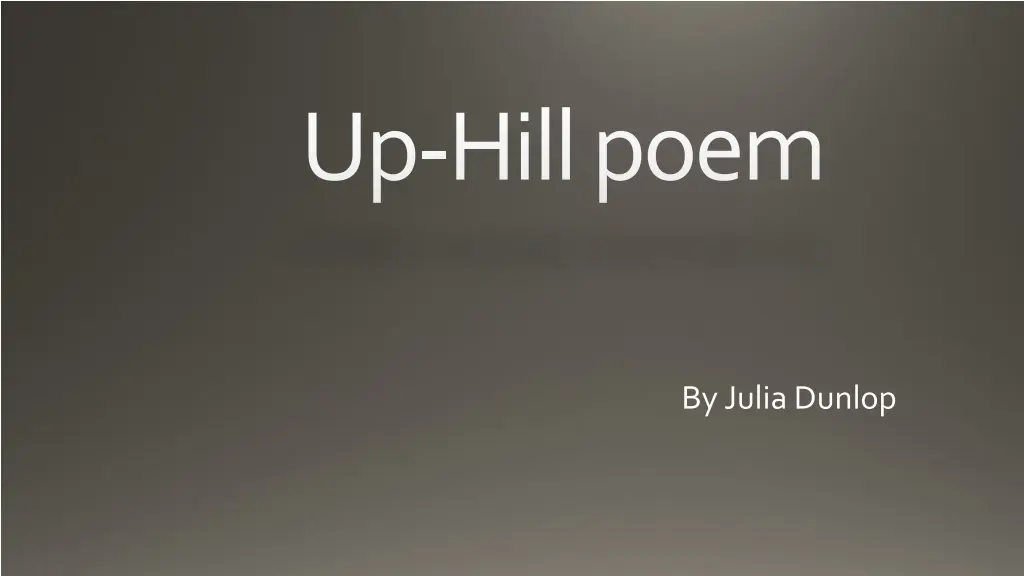
Analysis of Julia Dunlop's Poem 'Up-Hill' by Christina Rossetti
Explore the rhyme scheme, personification, and emotional depth in Julia Dunlop's famous poem "Up-Hill" by renowned poet Christina Rossetti. Discover the character's journey, uncertainties, and the underlying message of seeking guidance in times of confusion.
Uploaded on | 0 Views
Download Presentation

Please find below an Image/Link to download the presentation.
The content on the website is provided AS IS for your information and personal use only. It may not be sold, licensed, or shared on other websites without obtaining consent from the author. If you encounter any issues during the download, it is possible that the publisher has removed the file from their server.
You are allowed to download the files provided on this website for personal or commercial use, subject to the condition that they are used lawfully. All files are the property of their respective owners.
The content on the website is provided AS IS for your information and personal use only. It may not be sold, licensed, or shared on other websites without obtaining consent from the author.
E N D
Presentation Transcript
Up-Hill poem By Julia Dunlop
About the poet The poets name is Christina Rossetti. She was born on 1830, December 5th.
Poem Does the road wind up-hill all the way? Yes, to the very end. Will the day s journey take the whole long day? From morn to night, my friend. But is there for the night a resting-place? A roof for when the slow dark hours begin. May not the darkness hide it from my face? You cannot miss that inn. Shall I meet other wayfarers at night? Those who have gone before. Then must I knock, or call when just in sight? They will not keep you standing at that door. Shall I find comfort, travel-sore and weak? Of labour you shall find the sum. Will there be beds for me and all who seek? Yea, beds for all who come.
First Stanza of the Poem In the poem, I found a rhyme scheme in the first stanza that goes ABAB. In the whole poem, the only personification is found in the first stanza. In the first stanza, the person wh0 is trying to figure out where to go to get to the location he is discussing about the directions. Basically the first stanza is about the location and directions. Does the road wind up-hill all the way? Yes, to the very end. Will the day s journey take the whole long day? From morn to night, my friend. But is there for the night a resting-place? A roof for when the slow dark hours begin. May not the darkness hide it from my face? You cannot miss that inn.
The Second Stanza of the Poem In the second stanza of the poem, there is also a rhyme scheme. The second stanza is about finally getting to the location, what it looks like, and what the location has supplied. The words in this stanza is are not describing words, they are just used for asking questions. Shall I meet other wayfarers at night? Those who have gone before. Then must I knock, or call when just in sight? They will not keep you standing at that door. Shall I find comfort, travel-sore and weak? Of labour you shall find the sum. Will there be beds for me and all who seek? Yea, beds for all who come.
Poem Analysis The poet used these words so that the character is able to ask his or her friend about how to find the particular location and what it looks like. The emotions that I found in the poem when reading it is that the character seems calm but also anxious and nervous because the person is trying to figure out where to go by asking a lot of questions on the phone, but also the person isn t panicking. There are two stanzas in the poem if you split it in half, there are no couplets or quatrains, and the poem is made up of the rhyme scheme ABAB. The poems message and meaning is that it s ok to ask question when you are confused or lost. The poem is not written to or about someone.

